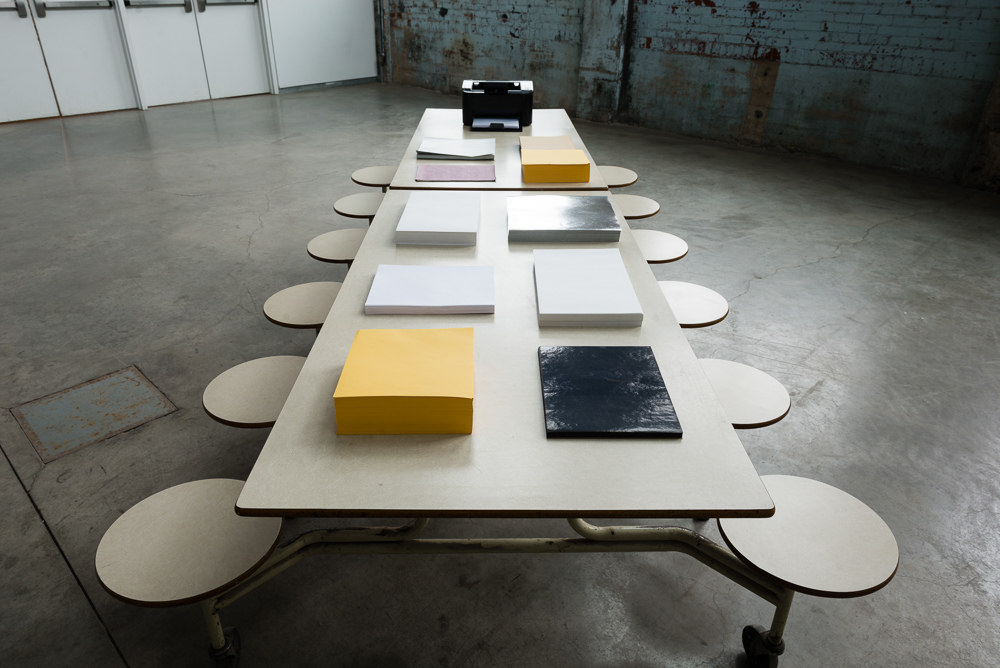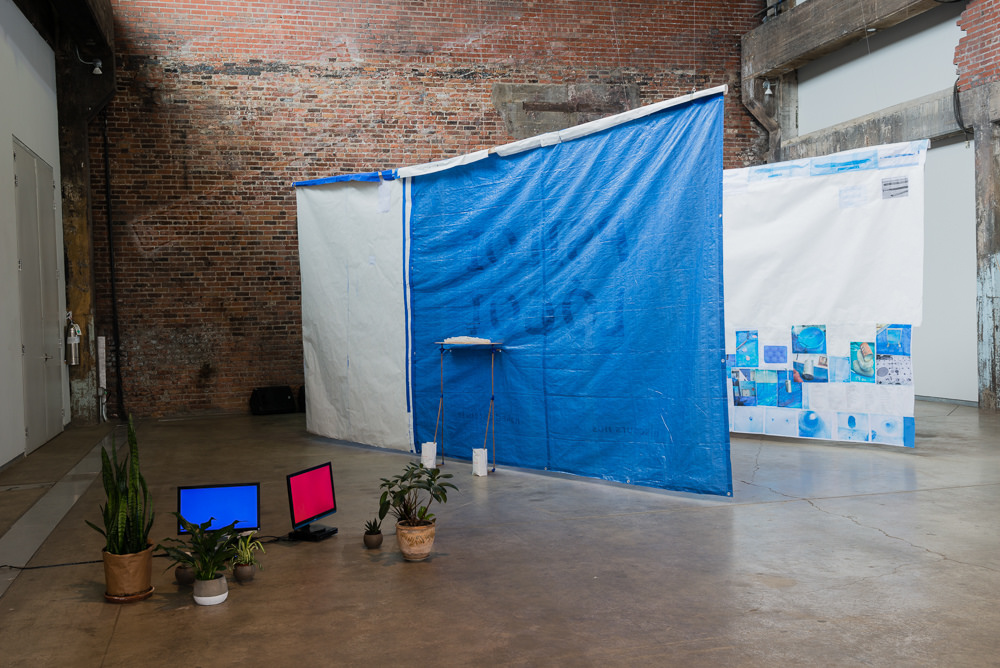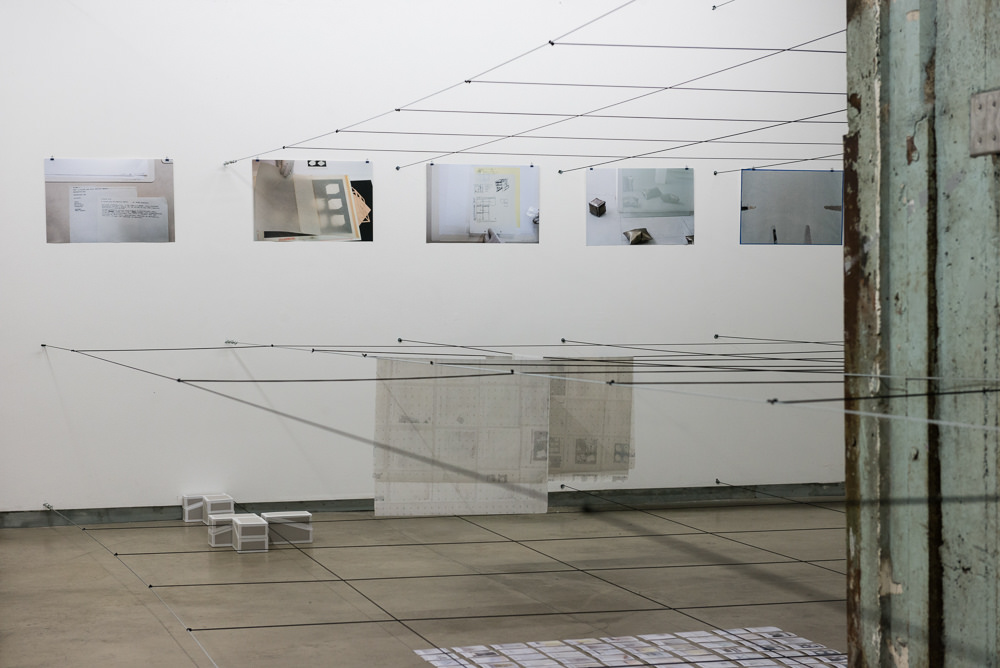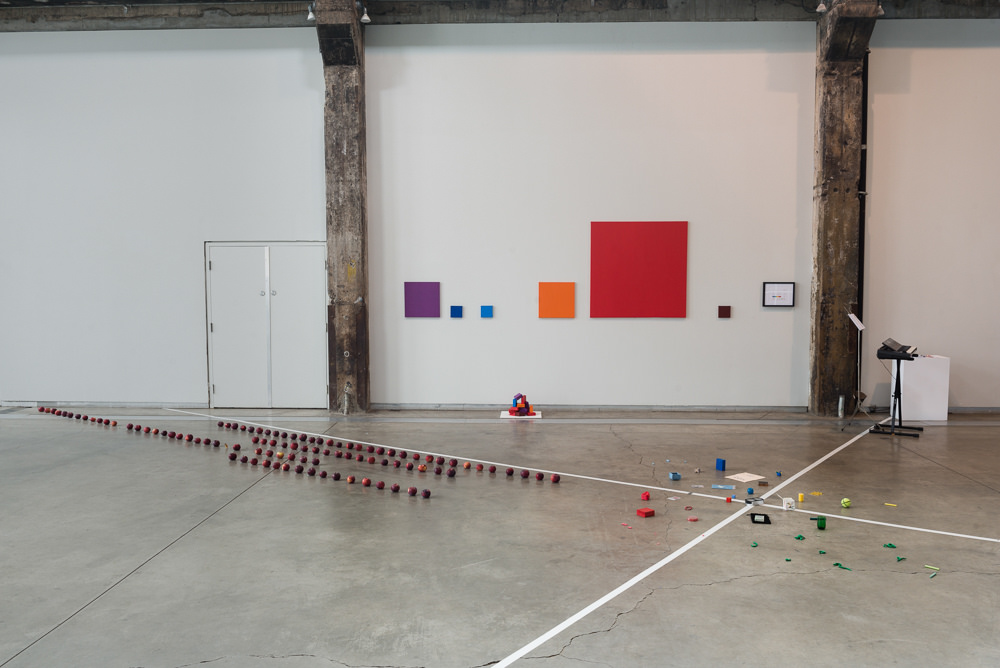The House of Dust by Alison Knowles
INHABITED BY BIRDS AND FISH
Exhibition at the Darling Foundry, Montreal
June 15-August 20, 2017
Artists: A Constructed World, Tyler Coburn & Byron Peters, Stéphane Degoutin & Gwenola Wagon, Nicole Fournier, Jeff Guess, Martin Howse, Norman C. Kaplan, Allan Kaprow, Jonathan Keats, Alison Knowles, Lou-Maria Le Brusq, Aurélie Pétrel, Joshua Schwebel and Daniela Silvestrin.
Curators: Maud Jacquin & Sébastien Pluot with Jeff Guess and the members of Art by Translation.
Alison Knowles is one of the founders of the Fluxus movement. In 1967, with the assistance of composer James Tenney she produced The House of Dust, one of the first computergenerated poems. Each quatrain of the poem began with “A house of . . .” followed by indications for materials, sites or locations, light sources, and categories of inhabitants randomly selected and combined by a computer program. In 1969, Knowles translated one of the quatrains into an architectural form, a “house”, which was installed first in Chelsea and then at CalArts in Los Angeles, where she was a professor from 1970 to 1972. At CalArts, the house became the focus of a burgeoning community of experimental artists and students, including Allan Kaprow, Emmett Williams, Charlemagne Palestine, Dick Higgins, Simone Forti, and Matt Mullican. Knowles taught classes in The House of Dust and used the structure as a platform for hosting performances, concerts, poetry courses, and film screenings, provoking numerous responses by other artists.
Using another computerprogram, she produced random combinations of a colour, a cardinal direction, and a number to “activate” and transform the house and its surroundings. For example, a student chose to interpret Knowles’ score by parking his yellow car beside the house, each day facing a different direction. Knowles herself performed the combination “99/red/north” by aligning 99 red apples in a line pointing north and inviting passers-by to take them in exchange for other objects.
At the Darling Foundry, the research program Art by Translation offered an exhibition that traced the history of The House of Dust, and reactivated the potential of Knowles’ work to generate forms and communities. Following the principle of the “open artwork” imagined by Knowles, contemporary artists have been invited to interpret the poem. These interpretations, in turn, called for new responses and activations. The conception of this exhibition extended and continued the process-based and participatory dimension of the original work: the project was developed during seminars and workshops, which gave rise to a series of invitations to artists, performers, musicians, and researchers from different disciplines. This process, and the invitations it has provoked, has generated artistic responses that will continue throughout the duration of the exhibition. The project is on view in the exhibition spaces of the Darling Foundry and also on the Place Publique.
• The exhibition was introduced by a space devoted to archival documents of The House of Dust, including images, films, publications, and a journal which reproduced archival documents and theoretical analyses of the work.
• In the small gallery, artist Aurélie Pétrel related the mathematical permutations at work in The House of Dust with those in the work of Peter Eisenman. The conceptual structure she has constructed assembled archival photographs collected through research in the Canadian Centre for Architecture archives
• In the large gallery, several works questioned the phenomena of translation between different types of languages, media, and subjectivities – a central dimension of The House of Dust.
• The Australian collective A Constructed World interpreted
one of the poem’s quatrains:
A HOUSE OF PAPER
IN A DESERTED FACTORY
USING ALL AVAILABLE LIGHTING
INHABITED BY BIRDS AND FISH
The paper house assembled by A Constructed World was part of a larger proposal to establish and question attempts at communication with an extreme other: eels. The collective invited different experts and the public to dialogue with this nomadic animal whose gender, habitat and life-cycle evades scientific determination. The quatrain and its interpretation by A Constructed World anchored the exhibition opening up a dialogue, an exploration of communication with inter-species and non-human others. Other artists were invited to extend these questions by exploring the possibility of translation between human and non-human languages. Jeff Guess, Martin Howse, Stéphane Degoutin, and Gwenola Wagon probed the physical and linguistic spaces within which relations among humans, machines, and animals take place. Beyond the animal world, Jonathon Keats and Nichole Fournier explored the possibility of an ethical, non-utilitarian engagement with the plant world. In another project by Jonathon Keats, and in the work by Tyler Coburn and Byron Peters, the exploration of non-human communication was extended to consider invisible phenomena: the interpretation of electromagnetic waves supposedly emitted by extraterrestrials or the use of resonance effects to provoke the destruction of the capitalist infrastructure.
As in previous iterations of the project, Knowles herself also responded to this particular quatrain and proposed a new version of her Gift Objects for The House of Dust protocol. Using a quadrant oriented to the cardinal directions drawn on the gallery floor, an international community of artists and friends linked to the history of The House of Dust have been invited to submit objects, which were arranged on the quadrant according to Knowles’ instructions. Nearby, the interpretation 99 Red North has been adapted to 99 Red South for this exhibition. During the exhibition, Lou-Maria Le Brusq composed an evolving archive of the project’s many aspects and developments, testifying to the collective process of research and creation, both visual and theoretical.
Co-sponsored by the French Ministry of Culture and the French Institute, ESBA Talm, ENSAPC, Cneai, The Australia Council for the Arts, The Canada Council for the Arts, The Quebec council for Arts and Letters, Conseil des arts de montréal, Ville-Marie Montréal CCA.



